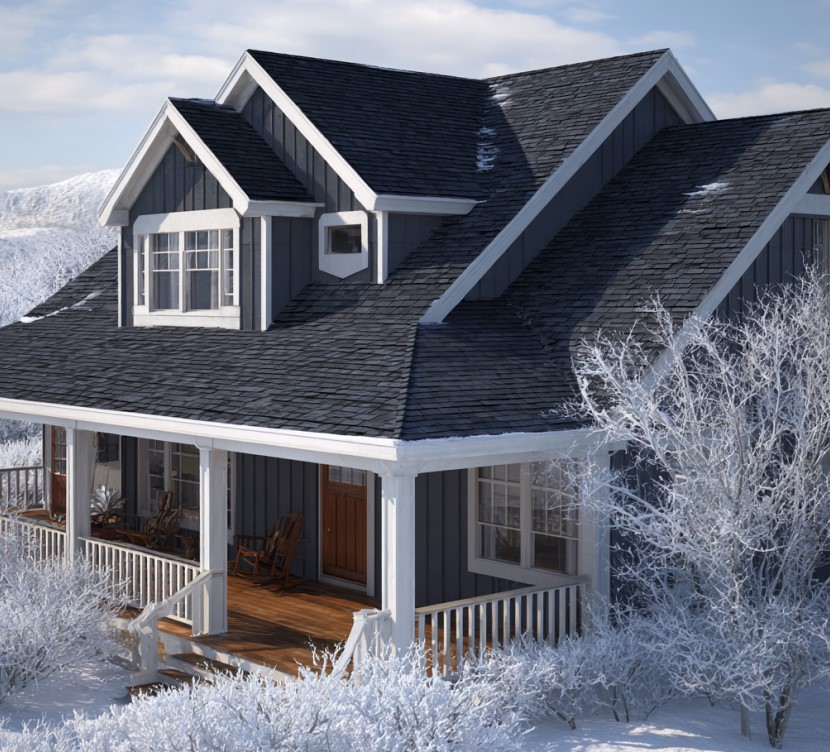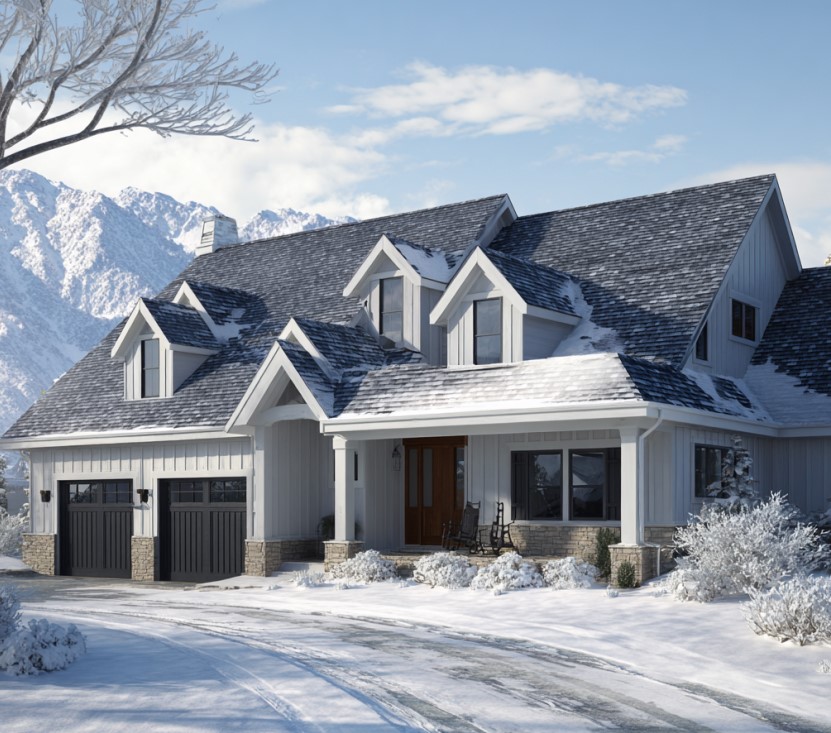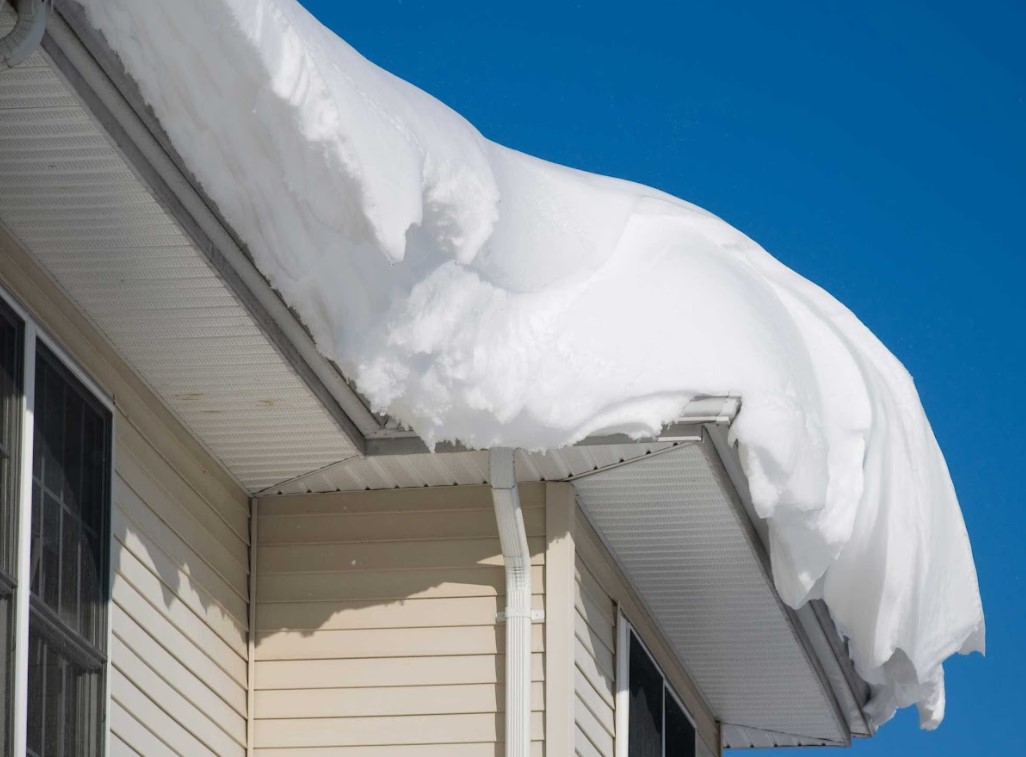Winter in the Midwest can be tough on your roof. Between freezing temps, heavy snow, and the occasional hailstorm, your shingles work overtime. That’s why more homeowners are switching to impact-resistant shingles, built to handle everything our unpredictable weather throws at them.
If you’ve ever had to patch storm damage or worry about leaks after a long winter, this is for you. In this guide, you’ll learn how IR asphalt shingles can help protect your home, lower your maintenance costs, and keep your family warm and dry through every season.
Key Takeaways
- Built for tough winters: These shingles can handle hail, ice, and high winds.
- Better value over time: Fewer repairs and replacements mean more savings.
- Energy-smart choice: Reflects heat in summer, insulates in winter.
At Quality Construction Advantage Group, we help local homeowners find snowproof roofing solutions that last, because in Illinois, your roof shouldn’t quit before winter does.
What Makes Impact-Resistant Shingles Different
Think of Impact-resistant shingles as the next generation of asphalt roofing. They’re made with flexible, reinforced materials, often rubberized asphalt or fiberglass, that let them absorb the shock of hail or debris without cracking.
These shingles go through Class 4 impact testing, where steel balls are dropped from 20 feet up to simulate real hailstorms. Only the strongest pass. That means fewer dents, fewer leaks, and less stress for you when the snow starts falling.
For Illinois homeowners, that extra protection matters. With ice dams, snow loads, and freeze-thaw cycles constantly working against your roof, IR asphalt shingles in winter offer the year-round durability you can count on.
What to Think About Before Upgrading to Impact-Resistant Shingles
Before you make the switch to snowproof shingles, it helps to know what to expect and how to plan:
- Roof Age: If your roof is nearing replacement, upgrading now can save you from future repairs.
- Climate: Impact-resistant shingles perform best in regions like ours with snow, hail, and strong winds.
- Budget: They cost more upfront, but insurance discounts and fewer repairs help offset the price.
- Insurance Savings: Some providers offer a percentage off premiums for homes with Class 4 shingles, always worth checking.
- Installation Quality: Make sure your roofer is certified and experienced with cold-weather installations.
A good contractor will walk you through all these details before the first nail goes in, no surprises, just a roof built to last.

The Top 5 Benefits of Impact-Resistant Shingles
1. Extra Protection Against Hail and Ice
These shingles are built to bend, not break. Whether it’s golf ball-sized hail or frozen debris, Impact-resistant shingles take the hit so your home doesn’t.
2. A Roof That Lasts Longer
Regular shingles may hold up for 20–30 years, but IR shingles can stretch that to 40–50 years with proper care. That’s decades of fewer repairs and more peace of mind.
3. Lower Insurance Costs
Homeowners with Class 4 shingles often qualify for insurance discounts. In some cases, those savings add up to thousands over the roof’s lifespan.
4. Stronger Wind and Snow Performance
When winter storms roll through, you want shingles that stay put. Snowproof shingles can handle winds up to 130 mph, about the strength of a Category 3 hurricane.
5. Year-Round Energy Savings
Some IR shingles are ENERGY STAR® rated, helping reflect sunlight in the summer and trap warmth in the winter. That means lower energy bills and a more comfortable home all year long.
The Technology Behind Class 4 Durability
Flexible Strength for Freezing Temps
Rubberized asphalt and SBS polymers give these shingles their flexibility, letting them move with temperature changes without cracking.
Fiberglass Reinforcement
Each shingle is backed with a fiberglass mat that resists tearing and keeps granules in place. That means better long-term protection and a cleaner, more uniform look.
Stronger Adhesion
Improved sealant strips prevent wind lift and snow intrusion, two of the most common causes of leaks during Midwest winters.
When properly installed, this technology works together to create a true snowproof roofing system that can handle the freeze-thaw cycle for years to come.
Quick Checklist: Should You Upgrade to Impact-Resistant Shingles?
- Your area gets snow, hail, or high winds.
- You’re replacing your roof soon.
- You want lower maintenance costs and insurance premiums.
- You plan to stay in your home for 10+ years.
If most of these sound like you, Impact-resistant shingles are worth every penny.
Impact-Resistant Shingles FAQs
How Long Do Impact-Resistant Shingles Last?
With proper installation and maintenance, Impact-resistant shingles can last up to 50 years, about twice as long as standard asphalt shingles.
Are They Really Worth It for Illinois Winters?
Yes. Between snow, ice, and temperature swings, Illinois roofs take a beating. IR asphalt shingles in winter help prevent cracking, leaks, and costly storm repairs.
Do Impact-Resistant Shingles Look Different?
Not at all. They come in the same colors and styles as regular shingles, and some even mimic the look of wood or slate.
Will I Get an Insurance Discount?
Most likely. Many insurance providers reward homeowners with Class 4-rated roofs. Ask your agent if your home qualifies for a discount.
Can They Help With Energy Efficiency?
Yes. Some models include reflective granules that improve insulation and reduce heat loss during winter.
Protect Your Home the Smart Way
Your roof shouldn’t struggle to survive winter. With Impact-resistant shingles, it can thrive through it.
At Quality Construction Advantage Group, we help homeowners across the Quad Cities protect their homes with strong, efficient, and snowproof roofing. Our certified installers work year-round, offering honest recommendations and lifetime workmanship warranties.
Ready to upgrade your roof before the next storm hits? Schedule your free inspection today. We’ll take a look, share your best options, and help you choose the right protection for your home, no pressure, just expert local advice.



